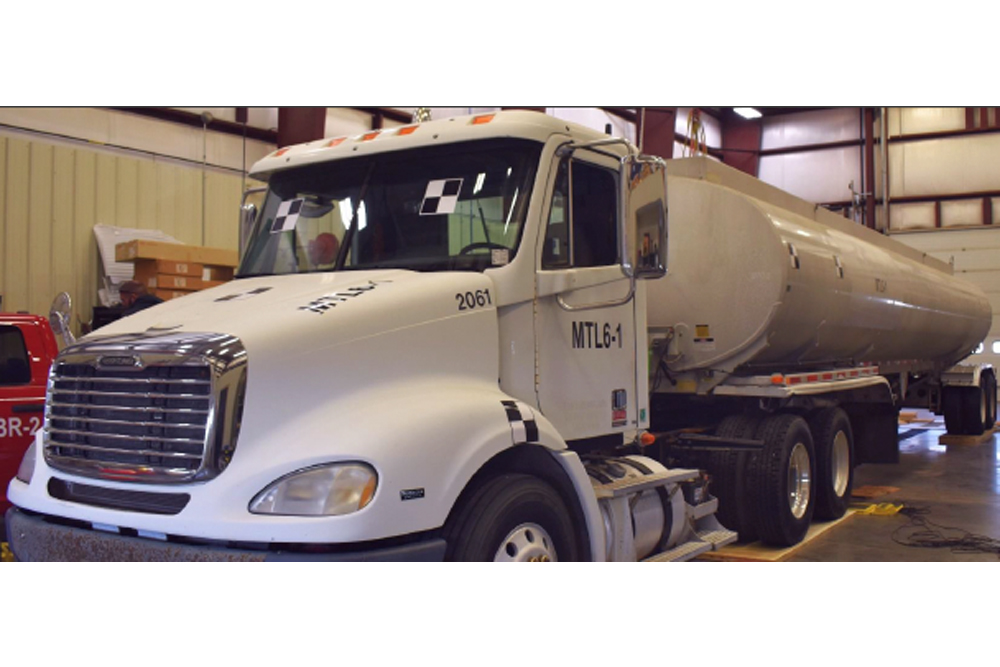Calendar Icon
Dec 07, 2021
Person Bust Icon
By Karl Vogel
![]() RSS
Submit a Story
RSS
Submit a Story

Researchers from the Midwest Roadside Safety Facility (MwRSF) will conduct a rare tractor-tanker vehicle crash on Wednesday, Dec. 8, to test how a newly designed and significantly shorter concrete roadside barrier performs in a vehicle crash.
The test – scheduled for 1 p.m. at the MwRSF's Outdoor Proving Grounds on the western edge of the Lincoln Municipal Airport – will be the first in the U.S. in more than 30 years for a Manual for Assessing Safety Hardware (MASH) Test Level 6 truck (one pulling a tanker and not a box trailer), according to Cody Stolle, research assistant professor.
The primary purpose of the event is to test a newly designed 62-inch tall concrete roadside barrier's performance when it is contacted by a fully loaded tractor-tanker vehicle.
For the past decade, MwRSF director Ron Faller and a team of researchers – including Stolle, Joshua Steelman and engineering graduate students – have been designing a thinner, shorter barrier that could lead to the first change in national standards in many decades. Currently, the standard roadside barrier to handle MASH TL-6 trucks is 90 inches tall, and the last test was in the late 1980s at the Texas Transportation Institute.
Computer simulations show that at the new height, Stolle said, more of the tanker will roll over the top of the barrier but that the barrier will be plenty tall enough to "upright the vehicle and prevent it from other potentially dangerous outcomes – like going over on its side or rupturing the tank and causing a large spill on the roadway."
The vehicle will be captured and redirected in less than 1 second, Stolle said.
The tractor – a 2010 Freightliner Columbia – will be pulling a 1997 LBT T4249 tanker-trailer with a capacity of 9,400 gallons, but loaded with only 7,000 gallons of water, Stolle said. That will bring the weight of the vehicle to about 80,000 pounds, or the maximum weight allowed on interstate highways.
The vehicle will be hooked up to a cable system and will be pulled to 65 mph by another vehicle along the tarmac. At a designated point, the cable system will be released, and the vehicle's momentum will carry it toward the concrete barrier that was constructed for this test.
MwRSF has prepped and painted the tanker and will be outfitting the tractor with some technology that will make the crash test possible, including:
• A remote braking system that will be operated remotely and will enable MwRSF to begin slowing the truck within a quarter of a second after it impacts the barrier.
• An industry-standard, fifth-wheel attachment that will connect the tractor and the tanker, which Stolle said is to lessen the chances of mechanical problems in the test.
• A guidance system installed on the tractor's right (or passenger) side – the side opposite to the barrier– allowing MwRSF researchers to guide the vehicle up to impact. The barrier is configured as a median barrier, and impact will occur on the vehicle's left side.
Those interested in viewing the crash test can register to watch via Zoom – https://matc.unl.edu/mwrsf/crashtest.php (use authentication code MatcCrashTest2021 to register) – and an invitation with a link to watch the test will be sent closer to the test date.
For more information about the crash test, contact Cody Stolle, research assistant professor, Midwest Roadside Safety Facility, (402) 472-4233 or cstolle2@unl.edu
Submit a Story